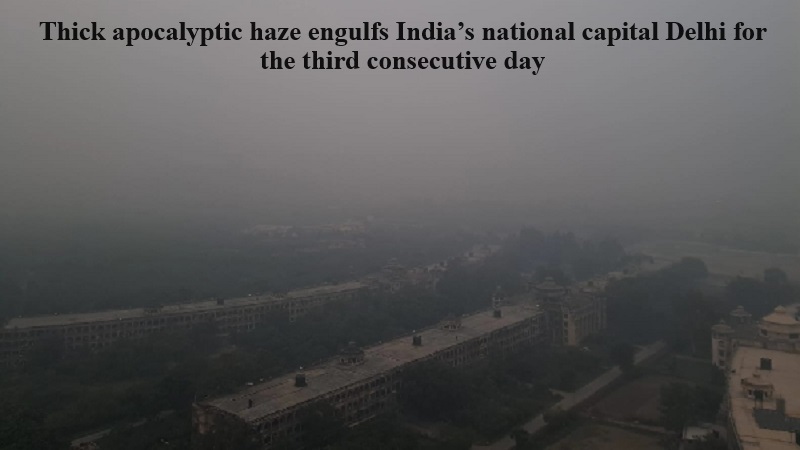
For the third consecutive day, a dense apocalyptic haze has enveloped India’s national capital, Delhi, leaving residents gasping for fresh air as air quality plummeted to ‘hazardous’ levels.
The Anand Vihar region of Delhi recorded the highest level of air pollution, with the air quality index (AQI) soaring to 999. On average, Delhi’s air quality surpassed 500, as reported by the weather agency aqicn.org.
AQI readings are used in India to assess the extent of pollution across the city, with values above 300 indicating hazardous air quality. An AQI value between 0 and 50 is considered healthy.
Scientists have issued warnings that pollution levels in Delhi and its surrounding areas will continue to rise for the next two weeks. Health experts are also sounding the alarm, as increased air pollution could exacerbate respiratory and asthma issues, particularly among children and the elderly.
“We are witnessing an increase in the number of cases of irritative bronchitis infections. People with respiratory problems like chronic bronchitis and asthma are advised to take their medications regularly and avoid unnecessary outdoor activities,” said Jugal Kishore, the head of the medicine department at Safdarjung Hospital.
In response to the worsening air quality, a central pollution panel implemented measures on Thursday, including a ban on non-essential construction activity and the entry of diesel trucks into the city. These actions are part of the Stage III Graded Action Response Plan, designed to address the annual surge in pollution in Delhi and the surrounding areas.
During a committee meeting, it was observed that pollution was expected to further deteriorate due to “highly unfavorable meteorological and climatic conditions.” India frequently experiences poor air quality during the winter months, often due to farmers burning paddy straw and cold temperatures trapping pollutants near the ground, a phenomenon known as temperature inversions.

Post Your Comments